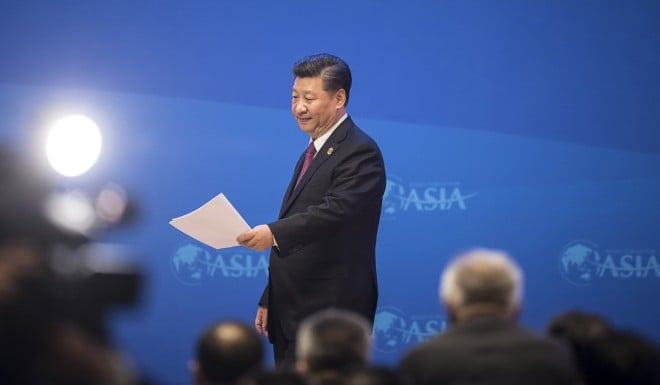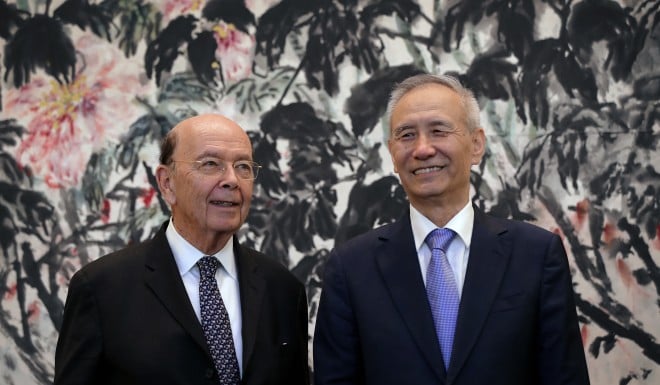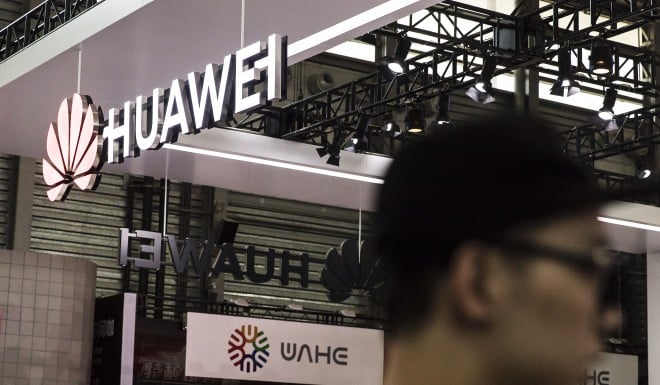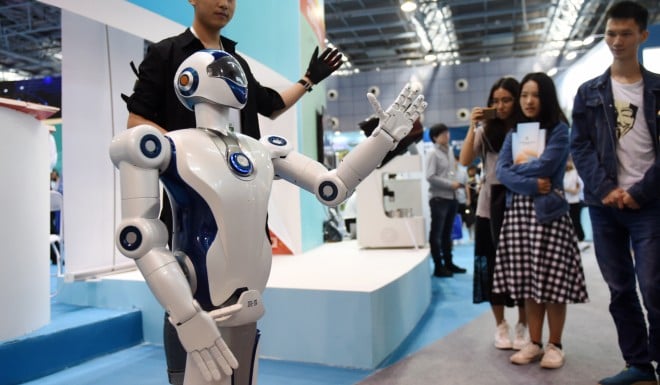President
Trump is expected this week to announce new restrictions on Chinese
investment in US industries deemed vital to national security.
Treasury Secretary Steven Mnuchin acknowledged that new measures, to be announced by June 30, will take aim at “countries that are trying to steal our technology,” an accusation that Trump had repeatedly leveled at China. (China has always denied such accusations.)

The gloom deepens for Chinese stocks as US-China trade conflict escalates.
Photo: AP
The White House recently released a 35-page document, detailing its view that China is seeking to boost its own industry by capturing the “crown jewels” of American technology.
The
allegation that China’s industrial policies and practices threaten the
US economy is a key reason why Trump began in March a trade offensive that has now turned into a clash with China, unnerving markets and businesses around the world.
Here are the five reasons why the US is picking a fight with China, according to the White House:
1. Theft
“State-sponsored
IP theft through physical theft, cyber-enabled espionage and theft,
evasion of U.S. export control laws, and counterfeiting and piracy.”
The
White House accuses China of literally stealing American technologies
and intellectual property, via “company insiders” or other people who
have access to trade secrets.
The
report cites news reports that China’s Ministry of State Security
deploys almost 100,000 intelligence officers at home and abroad to to
bolster its efforts.
The
Ministry of State Security is China’s spy agency, kind of like a hybrid
of the CIA and FBI, and it has been said to recruit US intelligence
officers to conduct espionage against their homeland.
In one instance cited in the White House report, in June 2016 a Florida woman, Amin Yu, was found guilty of illegally exporting submarine parts from US companies to a Chinese university associated with the Chinese navy.

President Xi Jinping of China in April vowed to open sectors from
banking to auto manufacturing in a speech at the Boao Forum for Asia
Annual Conference.
Photo: Bloomberg
2. Regulation
“Chinese
industrial policy features a wide range of coercive and intrusive
regulatory gambits to force the transfer of foreign technologies and IP
to Chinese competitors, often in exchange for access to the vast Chinese
market.”
Foreign
companies in China are not allowed to own a majority stake in most
sectors. They’re usually required to form joint ventures with Chinese
counterparts.
Citing
a 2017 survey conducted by the US-China Business Council, the White
House report says many American companies are victims of forced
technology transfer to Chinese companies.
China
has denied that its policies require technology transfer from foreign
companies. But in a tacit acknowledgement of such complaints, premier Li
Keqiang vowed in March that “there will be no mandatory requirement for technology transfer” as the country relaxed foreign ownership rules.
But
such promises don’t address criticisms that even if there’s no official
policy demanding such transfers, technology and know-how must be given
in exchange for market access.

US Commerce Secretary Wilbur Ross met with Chinese Vice Premier Liu
in Beijing on Jun 3 to negotiate a resolution to the US-China trade
dispute.
Photo: EPA-EFE
3. Coercion
“China has used export restraints, including export quotas and export duties, to restrict access to critical raw materials.”
China,
the world’s dominant producer of raw materials crucial to the
manufacturing of high-technology products, has used export restraints to
restrict foreign access to these materials, the report says.
Examples include tungsten, a rare metal used to harden steel and used by the auto industry for cutting and machining tools.
“The
export restraints can also create pressure on foreign downstream
producers to move their operations, technologies and jobs to China,”
says a 2017 report by the US Trade Representative.

Huawei, the world’s largest telecommunications equipment maker, has
been deemed by US intelligence agency as a security risk.
Photo: Bloomberg
4. Information harvesting
“China
acquires US technologies and IP from America’s national security
innovation base through three primary channels of information
harvesting.”
These
channels include the collection of data through open source means –
such as from publicly available websites – the White House report says.
The report acknowledges that many countries do it, but claims that the
scale and scope of China’s collection is “historical.”
The
report also says Chinese nationals in science and technology sectors
could be manipulated or pressured into gathering information for the
Chinese state.
For
instance, the report suggests that Chinese telecoms giant Huawei’s
partnership with the University of California-Berkeley to research
artificial intelligence could give the Chinese company’s employees a
glimpse into military applications of the technology.
5. Investment
“The
Chinese government has institutionalized the industrial policy of
inducing investment in ‘encouraged’ high-technology sectors using the
financial resources and regulatory instruments of the State.”
The White House report describes China’s “Made in China 2025”
plan as an attempt to dominate advanced technology sectors such as
artificial intelligence, and accuses the country of using investment as a
way to get there.
The
report suggests that such behavior is problematic because such
investment is aided or directed by the Chinese state and therefore
susceptible to government control.
“China
can influence private enterprises through the aforementioned rules
China has put in place with respect to the Chinese Communist Party’s
mandated role in corporate governance,” the report says.

China’s ‘Made in China 2025’ initiative describes a development plan
to turn the country into a superpower in emerging high-tech sectors
such as robotics and artificial intelligence.
Photo: Xinhua
But as an escalation in the US-China trade conflict looms, Beijing has attempted to play down the industrial initiative, the South China Morning Post reports Tuesday.
One of the most direct ways to acquire US technology is for a Chinese company to buy a controlling stake in a US company.
That’s
the most common form of Chinese investment in the US, and something
that the new investment restrictions are likely to address.
In
the days to come, expect to hear a lot more about an obscure branch of
the US Treasury Department called the Committee on Foreign Investment in
the United States.
More
often known as CFIUS (pronounced SIFF-ee-yus), the committee is
responsible for approving foreign acquisition of American companies,
“crown jewels” or not.
No comments :
Post a Comment